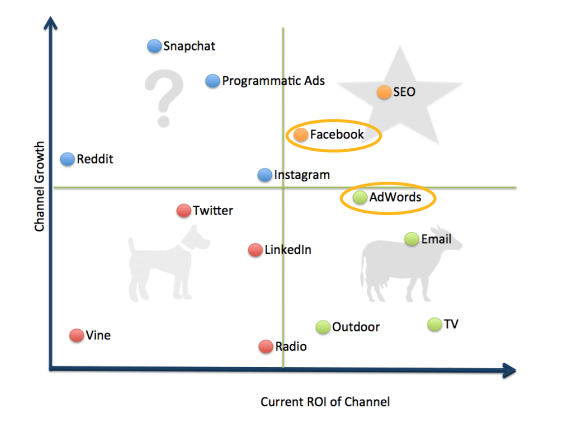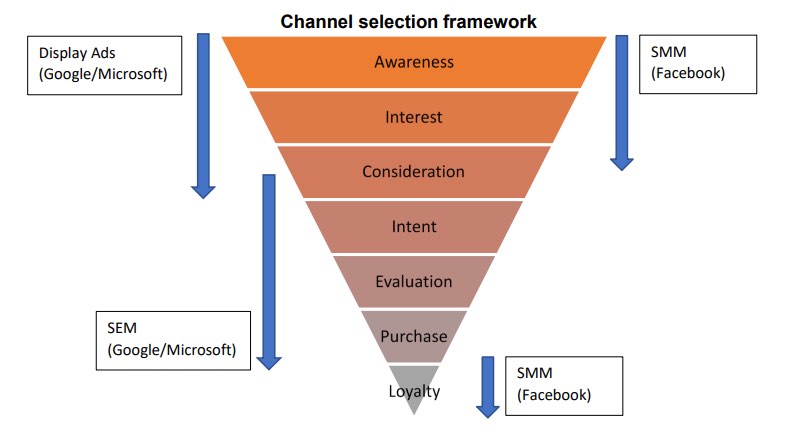Online advertising is more competitive than ever before. It’s one of the reasons why we made our platform free in July. In addition, we’ve guided SMB’s with marketing tips for dealing with the crisis, tailoring campaigns to specific age groups and how physical stores can benefit from the surge in online shopping.
To carry on supporting SMB’s, we’ve done a deep dive into digital marketing strategies with the help of MBA students at the University of Cambridge. The main aim of the study was to uncover actionable insights around the key factors that drive clicks, conversions and growth, which will help improve our product and further aid businesses to improve their marketing performance.
You can find their other findings here:
- What Makes Online Marketing Work: The Cambridge University & Adzooma Findings
- A background look into how and why we ended up working with the University of Cambridge
- Why Your Content Strategy Is So Crucial To PPC Success: The Cambridge University & Adzooma Findings
- The Cambridge team took a deep dive into sentimentality to help shape how you write your PPC ads
- What Makes A Landing Page Convert
- Using the data, the team took a close look at how to get those extra leads and customers from your landing page
This is just one of the many things we do to try and improve our product, as we can utilise the data to provide more accurate suggestions to our customers. If you want to read more about our optimisations, you can do so here.
For now, here’s why digital marketing strategies are so important, why we partnered with Cambridge University and a deep dive into our new research to help you succeed online.
*Disclaimer – All campaign data provided to study participants was selected at random and anonymised.
Why is this important to me?
Knowing which digital marketing channels work for your brand is essential. Each platform has different audiences with different intent, so what works for one business might not work for you.
For example, although Google Ads is the most popular advertising network, that doesn’t mean it’ll help you achieve the best results in every single area. As this research uncovers, increasing ad spend on Facebook Ads will actually have the biggest impact on impressions.
What’s more, as 54% of Bing users are over the age of 45, and a third of them have a household income of over $100,000, Microsoft Advertising works best for targeting a more professional and affluent audience. Features such as LinkedIn Profile Targeting are also designed for this reason and are more suited towards industries such as Automotive, Finance and Travel.
“The question of what makes marketing work is one which very few have the resources to answer – yet a question that has been plaguing marketers for as long as the practice has been around.
Armed with our data and unique view across platforms, matched with the analytics skills and vast business experience of the students, it was a perfect fit to set about revealing key insights to the question.”
Sal Mohammed, Ex-Googler and current Head of Partnerships at Adzooma
Who took part in the study?
This research was undertaken by Cambridge Business students Akanshaa Khare, Srishti Warman and Sunil Grewal. All three of them have worked with multinational companies such as BCG, ZS Associates, Amazon and Barclays.
Having worked with such teams in the past, they were able to build on their knowledge of the digital marketing industry to identify the most effective ways for SMB’s to maximise their return on ad spend and ultimately grow their brand.
The partnership came about as a result of a previous project with Cambridge Judge Business School and Adzooma’s Head of Partnerships, Sal Mohammed. He told us “such was the calibre of the candidates, I’ve since been itching to work with a cohort from the university again”.
Each student focused on a specific area of research, but this piece will focus on the digital marketing strategy, based on secondary research, factor analysis, iterative regression and a comparison of ad effectiveness and cost efficiency KPIs.
What the study told us
Taking a deep dive into the hundreds of thousands of advertising accounts on Adzooma, this gave us the unique insight of being able to compare data across the three marketing channels of Google, Microsoft and Facebook ads. Data that couldn’t be found elsewhere.
Therefore applying the findings of this unique research could be crucial to helping SMB’s transition online during this time and create a successful digital marketing strategy to achieve their goals.
“The aim of the eventual deliverable was to create playbooks that will illustrate what leads to better ad conversion rates”, said Sristhi Warman. This data would then be used by small businesses and agencies to improve their online advertising performance, as well as enhance the Adzooma platform.
Study A: How do I select marketing channels?
A long-lasting strategy is a strategy that looks at the big picture.
With this in mind, the Cambridge students looked at data aggregation across Google, Facebook and Microsoft, data enhancement and other methodologies including calculating digital advertising ratios. Using this data, they created a 5-step strategy small businesses can use when starting out.
This includes:
- Knowing your target customers and selecting a combination of marketing channels accordingly
- Defining business objective of the ad campaign, based on the comprehensive marketing funnel
- Using the channel-selection framework for suitable advertising formats and channels
- Using overlap resolution methodology to make a choice between overlapping channels from the previous step
- Testing and learning, to understand your customers better and adapt your strategy as you go
So, let’s explore what the first step looks like.
Display, search and social advertising are important for all businesses. But as time goes on and you sharpen your targeting, you might find you want to focus more on one channel than another. This is where the research aimed to conclude the most effective mix of advertising platforms for an SMB.

The research shows that marketing channels which fall into the question mark category could be risky for SMB’s, and those who are categorised as ‘dogs’ should be avoided.
Based on the Cambridge digital marketing acumen and academic literature, it’s also clear that customer behaviour differs across the marketing journey, and based upon which part of the journey a customer is in, they are “more likely to visit a specific channel and respond to a kind of advertising format accordingly”.
This evaluation is supported by existing research which surveyed 1,000 cross-industry SMB’s. It showed:
- Acquiring new customers is the most chased (56%)
- Other goals ranging from ‘generating awareness’ to ‘generating leads’ & ‘retaining customers’ are comparably chased (45% to 49%)
Taking this data into account, the Cambridge students decided that merging the traditional sales funnel with the customer lifecycle model would be the best way for an SMB to manage their overall marketing goals.
The graph below shows which platform a customer is most likely to begin their buying journey on, and where they become more loyal to a brand.

Following this, overlap resolution methodology was used to determine the impact of cost on different marketing channels. This way, SMB’s would be able to effectively determine which platform is best to use when similarities occur – as seen in the funnel above.
The results showed which factors had an impact on results:
| Factors | CPM (Cost per thousand impressions) | CPC (Cost per click) |
|---|---|---|
| Channel | Significant | Significant |
| Country | Less significant | Less significant |
| Industry | Not significant | Less significant |
| Time/Month | Not significant | Not significant |
| Ad Spend | Not significant | Not significant |
Having determined a connection between channel and cost KPIs, further research was conducted to find out the average CPM and CPC across Google, Facebook and Microsoft Ads.
| Channel | Median CPM | Median CPC |
|---|---|---|
| 3.1 | 0.15 | |
| 7.5 | 0.45 | |
| Microsoft | 12.6 | 0.54 |
Overall result: Facebook is the most cost-effective channel on average for SMBs.
So, if you’re choosing between Google and Facebook to advertise your business, on average Facebook would be the best bet. But, it’s also advised to look at the click-through rate of both channels as this could differ depending on factors such as industry and geography. Average CTRs are publicly available to help you make a clear decision.
For SMB’s that are debating between Google and Microsoft, the MBA students suggest using Google due to its high reach and low cost. Microsoft could also be useful in addition to Google or particularly suitable for specific business types, especially as it offers high-level targeting and demographics.
Study B: How much should I spend across channels?
For years, advertisers have questioned how much of their budget should be spent on paid advertising. A budget too big might go to waste, but one that’s smaller might not bring the return you need. Again, we worked closely with the MBA students at Cambridge University to find the answer.
To explore this hypothesis, a regression analysis was undertaken to validate if ad spend actually has an impact on increasing the number of impressions and clicks. In other words, whether increasing your budget on platforms such as Google Ads would improve the performance of your campaigns.
The advertising accounts that were analysed were connected to the Adzooma platform, ensuring the data was current, reliable and representative of the three major advertising networks.
Overall, the analysis showed that, on average, if an SMB increased their ad spend by just £1 when using Adzooma – which they can sign up for at no cost – they could expect to see different results across all three channels.
| Channel | Expected increase in impressions | Expected increase in clicks |
|---|---|---|
| 7% | 8% | |
| 10% | 9% | |
| Microsoft | 21% | 9% |
Overall result: Microsoft is the most responsive channel for increasing ad spend.
SMB’s could use this research to distribute their budget more accurately and get a clear idea of which channels will give them the best return on their investment.
However, it’s important to note that “every business is unique and channel mix selected through this framework should be validated through their own experiments”.
How will the data help Adzooma and SMBs?
Generally, the data collected will help to improve the Adzooma platform and allow us to provide more accurate optimisations.
For example, it was suggested that Adzooma could evaluate how channel partnerships can be best leveraged for our SMB customers. As Facebook seems to be the most used channel by 70% of SMB’s, and data analysis suggests it is optimal in terms of cost and return, Adzooma could use this data to scale their Facebook features and Opportunities.
This idea was reiterated by Sal Mohammed, Head of Partnerships at Adzooma, who said: “A lot of the learnings we unearthed from this study will go directly into the core technology. We already demonstrated that Adzooma users receive higher click-through rates than the industry averages by leveraging our technology and the changes we will implement following this work will only enhance that dividend.”
After seeing how easy it is for Adzooma users to compare account performance, the MBA students also devised a benchmarking method SMB’s could use for their own analysis.
The graph would allow businesses to find their peer group and compare ad effectiveness and efficiency, helping them decide which platforms to use. A feature like this is excellent for SMB’s trying to grow their brand and drive traffic in the industry.

If you need support in a different area, Adzooma Marketplace has the expertise you’re looking for. It’s the number one platform that connects agencies, freelancers and more with high-quality leads looking to buy. Browse the categories today to find your ideal match. Or don’t hesitate to get in touch if you’d like to discuss the findings further.
Maximise success with the right channels
If you’re new to advertising or managing your own ad accounts, it can be difficult to build an effective digital marketing strategy. There’s a lot of time and effort involved, and you may have limited resources or digital expertise.
Using the data above, you should have a clear idea of how to select the best digital marketing channels for your business. If you have a tight budget, as the Cambridge research has shown, you will get more for your money using Facebook Ads.
Plus, although Google, Facebook and Microsoft ads are the most popular online advertising platforms, there are alternative (and less expensive) places to list your ads. Although they’re still effective, having fewer users means it’s often easier to reach your exact target audience.
These examples were not analysed within the research, but could increase your profits aside from your most profitable platform.
A few examples include:
- Capterra: An ultimate software review site that allows people to search for new software based on thousands of trusted reviews. Users typically spend a lot of time here, so it’s a great opportunity to set yourself apart and sell the benefits of your business.
- Amazon: 300 million people actively use Amazon which makes it an excellent network to list your shopping ads.
- Reddit: You only need $5 minimum to launch a campaign on Reddit. Popular posts are promoted on the front page, and ‘subreddits’ reach users who share similar interests. Both options allow you to share diverse content with audiences from across the globe.
To find out more about overlooked digital marketing channels, read the full blog post.




